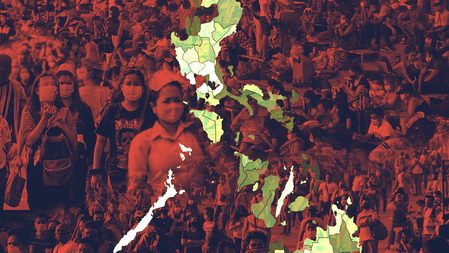SUMMARY
This is AI generated summarization, which may have errors. For context, always refer to the full article.

The 2020 census released by the Philippine Statistics Authority showed that the National Capital Region’s (NCR) population growth declined over a five-year period.
The growth rate of 1.58% from 2010 to 2015 in Metro Manila was down to 0.97% from 2015 to 2020, according to the Commission on Population and Development (PopCom).
Most of the cities recorded a decrease, except for San Juan, Malabon, Pasay, Pateros, and Valenzuela. Valenzuela, in particular, recorded an increase of up to 3.03%, the highest among the 17 local governments in the region.
PopCom said that in Metro Manila, the decrease was most noted in Navotas City with a negative growth rate of -0.16% from 0.03% in 2015.
Quezon City, Manila, and Caloocan are still the most populated cities, with population counts of 2.9 million, 1.8 million, and 1.6 million, respectively.
PopCom partly attributed the decrease to pandemic-driven internal migrations that pushed many Filipinos to return to their provinces.
Metro Manila, an urban sprawl that is home to over 13 million people, has repeatedly become a hotspot for coronavirus infections. Outbreaks in the metropolis have hampered the country’s long road to economic recovery.
But PopCom said that the decrease is also a testament to the effectiveness of the government’s family planning program.
“Our target for the country is 2.1 total fertility rate or around two children per woman during her reproductive years. With this scenario and further promotion of use of modern contraceptives in all barangays, we could see a declining population growth rate in the next few years,” PopCom Metro Manila director RD Espanol said in a statement on Friday, July 9.
The 2020 census put the Philippines’ official population at 109 million. — Rappler.com
Add a comment
How does this make you feel?

There are no comments yet. Add your comment to start the conversation.